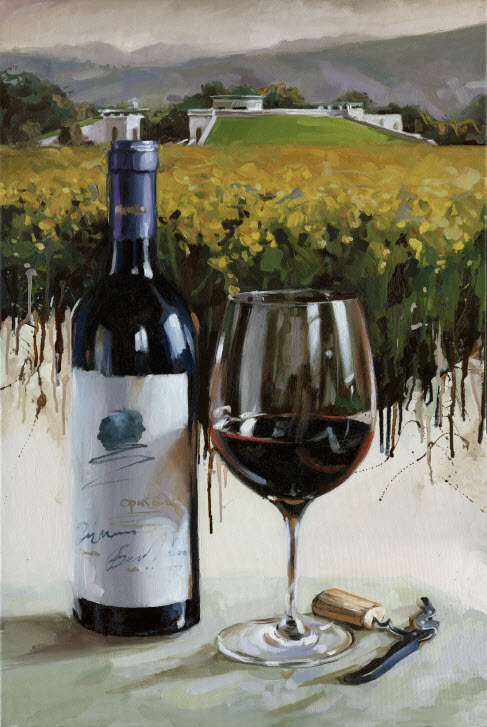
Irrigation is also a big question in the Napa. This has two key advantages: firstly, the wave of cool air keeps the grapes from burning, and secondly, the evaporation that follows these chilly nights creates a humidity that, in turn, refreshes the vines. Then, at night, even in the summer, they cope with temperature drops of at least 20☌, a particularity of Opus One’s location not far from the San Francisco Bay. Very little rain falls on the Napa Valley, and the vines are grown tall and in high density to protect the grapes from the intense sun. And the environment they’ve adapted to is quite something. Far from home, the Cabernet Sauvignon, Petit Verdot, Cabernet Franc, Merlot, and Malbec plants have nonetheless learnt to thrive. Counting 90,000 visitors a year at its peak, a world-class winery, and 69 hectares of highly diverse terroir, it’s clear that planting Bordeaux vines in foreign soil was a risk worth taking. Opus One’s first vintage was the 1979, though, and the estate seems to be doing rather well so far. Philippe de Rothschild once said that “making a great wine is easy it’s just the first 100 years that are difficult”. We wouldn’t want it any other way, either! The result of this hybrid culture is a meeting of minds and methods that produces truly special wine. Yet, however much the traditional, ‘old-world’ approach could be imitated, such a project was bound to grow legs (or roots!) of its own. Teaming up with Robert Mondavi, the Baron de Rothschild’s mission was to bring Bordeaux’s viticulture to life on totally new ground, which meant initially importing Bordeaux’s classic grape varieties, oak barrels for the same kind of ageing, and more than a suitcaseful of ancestral know-how. When Philippe de Rothschild took a liking to California’s character, the idea of bringing his vast wine-making experience over the Atlantic was self-evident. Opus One has been an ambitious project since the day it was thought up.

Here’s what we learnt with Gwendoline La Burthe, Export Manager France for Opus One. Such a quick shift in the climate sets the scene nicely for a Californian domain born of contrasting cultures, and whose wines we were lucky enough to taste as a team last June. During harvest season, the workers at Opus One don their woolly hats and scarves to pick the estate’s all-precious fruit by night, so far does the temperature plummet. When the sun sets behind this immense landscape, though, what’s revealed is a different world.

The 2019 Opus One is comprised of 78% Cabernet Sauvignon, 8% Merlot, 6% Cabernet Franc, 6% Petit Verdot, and 2% Malbec.The hues and contours of California’s Napa Valley are infused with bright sunshine, framed by a broad backdrop of hills and an expanse of vineyards that stretch far, far further than the eye can see. A delicate dark chocolate bitterness lingers on the finish. The freshness and soft glow of acidity create a subtle tension with dark fruit flavors, savory herbs, espresso, and cocoa. The creamy, satiny texture is framed by fine-grained tannins.

The Opus One Napa Valley Red Wine has intense aromas of black plum, blueberry, black currant, and dried rose petals, accentuated by mineral undertones. A blend of 78% cabernet sauvignon, 8% merlot, 7% petit verdot, 6% cabernet franc and 1% malbec. Fantastic length and structure to the wine, with tightness and focus. The purity of fruit is really something else here, with currants and fresh flowers, such as violets and roses. Tasted as a barrel sample, this is a truly magnificent Opus One in the making!

Full-bodied, the palate is jam-packed with juicy black, blue and red fruits, framed by velvety tannins and background freshness, finishing on a compelling earthy/mineral note.
#Buy opus one wines plus#
This year, with the 2019s, he was still tweaking the blend, but he did mention that this is "pretty close to the final blend." Deep garnet-purple in color, the 2019 Opus One leaps from the glass with notes of Black Forest cake, Morello cherries, mulberries and fresh blackcurrants plus hints of licorice, wilted roses, Sichuan pepper and iron ore. Winemaker Michael Silacci commented that usually the blends are finished in January or February after the vintage. No discounts or coupons can be applied to this item


 0 kommentar(er)
0 kommentar(er)
